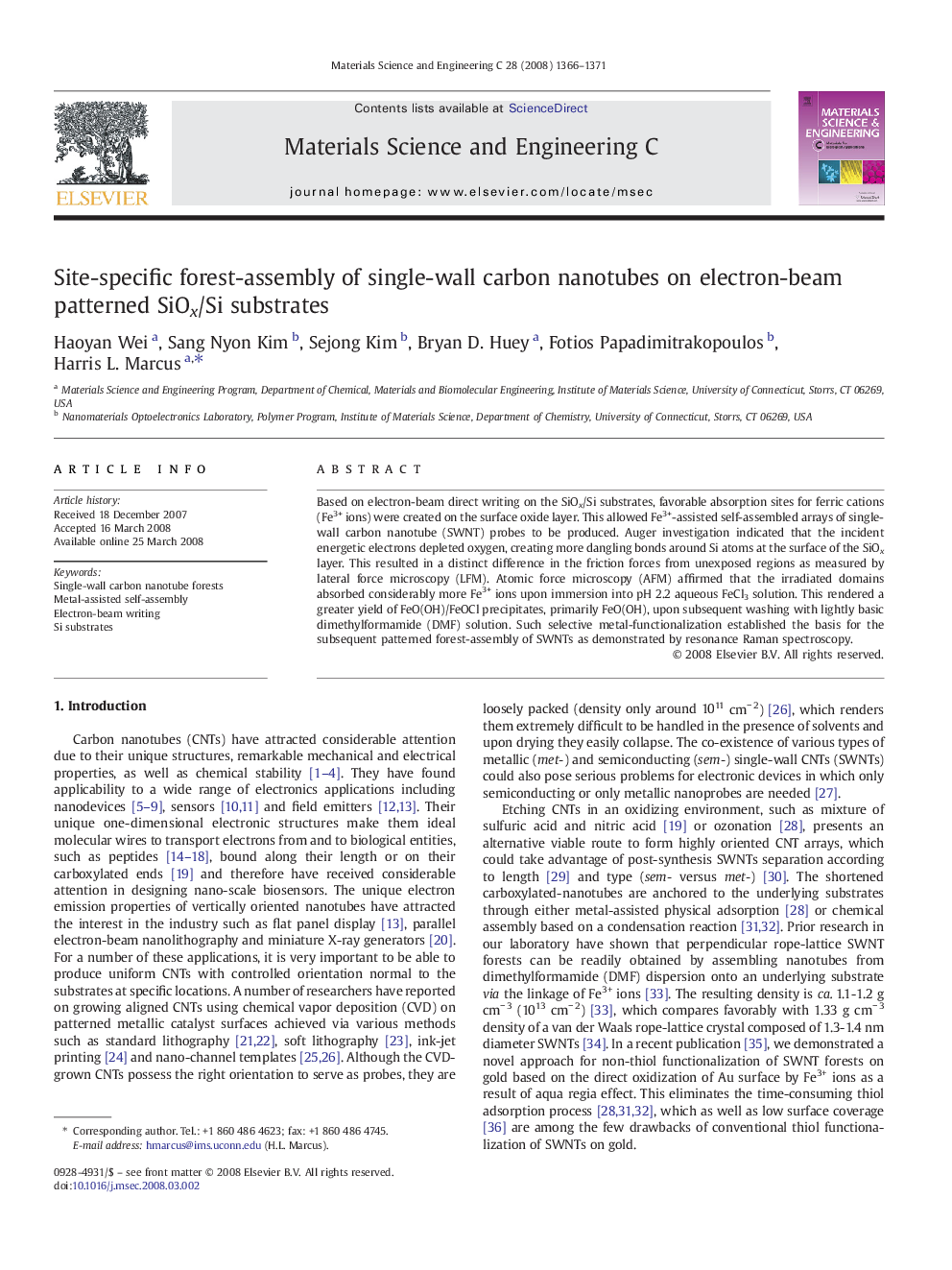| Article ID | Journal | Published Year | Pages | File Type |
|---|---|---|---|---|
| 1430838 | Materials Science and Engineering: C | 2008 | 6 Pages |
Abstract
Based on electron-beam direct writing on the SiOx/Si substrates, favorable absorption sites for ferric cations (Fe3+ ions) were created on the surface oxide layer. This allowed Fe3+-assisted self-assembled arrays of single-wall carbon nanotube (SWNT) probes to be produced. Auger investigation indicated that the incident energetic electrons depleted oxygen, creating more dangling bonds around Si atoms at the surface of the SiOx layer. This resulted in a distinct difference in the friction forces from unexposed regions as measured by lateral force microscopy (LFM). Atomic force microscopy (AFM) affirmed that the irradiated domains absorbed considerably more Fe3+ ions upon immersion into pH 2.2 aqueous FeCl3 solution. This rendered a greater yield of FeO(OH)/FeOCl precipitates, primarily FeO(OH), upon subsequent washing with lightly basic dimethylformamide (DMF) solution. Such selective metal-functionalization established the basis for the subsequent patterned forest-assembly of SWNTs as demonstrated by resonance Raman spectroscopy.
Keywords
Related Topics
Physical Sciences and Engineering
Materials Science
Biomaterials
Authors
Haoyan Wei, Sang Nyon Kim, Sejong Kim, Bryan D. Huey, Fotios Papadimitrakopoulos, Harris L. Marcus,
